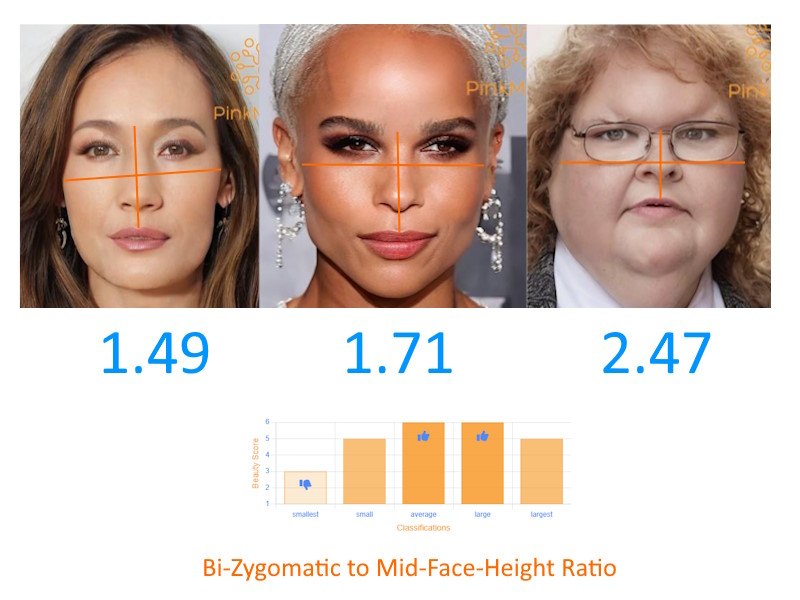Summary Research shows that bi-zygomatic width, or the distance across the cheekbones, is generally larger in males, highlighting it as a masculine trait. Velemínská et al. (2012) found that during puberty, higher testosterone levels in males promote the lateral growth of cheekbones, resulting in greater bi-zygomatic width. Similarly, Lakhiani and Somenek (2019) confirmed that wider […]
Category: Golden Proportion
The five-point scale is a widely used method in medical and psychological research to assess facial adiposity with greater nuance than the basic low, moderate, and high categories. This scale provides a more detailed gradation, allowing for a finer analysis of facial fat distribution and its correlations with health indicators. Detailed Explanation of the Five-Point […]
Summary Nose Length to Philtrum length ratio is larger among females. Yadav et al. (2018) found that females in Nepal have a slightly larger Nose-Length to Philtrum-Length ratio (3.76) compared to males (3.55). Similarly, Nwe et al. (2024) found that among Malay and Chinese university students in Sarawak, females had slightly larger ratios than males, […]
Summary The jaw angle, also known as the gonial or mandibular angle, is where the lower jawbone meets the back edge of the jaw’s vertical part. A study by Mommaerts and Claymaet (2023) identified Model #63, with a jaw angle of 122.3°, as the most attractive for white females, with the average attractive jaw angle […]
Summary Philtrum length, defined as the distance from the the bottom of your nose to the upper lip, has been the focus of several studies. Shin et al. (2014) measured the philtrum length in 251 healthy Korean adults, finding a mean length of 14.3 mm in females. Hasibuan et al. (2024) reported an average philtrum […]

Summary Facial width-to-height ratio (fWHR) is a measure comparing the width of a person’s face to its height. The width is measured at the upper bizygomatic width, while the height is from the top of the eyelids to the top lip. This ratio has been proposed as a sexually-selected signal in humans. A research found […]
Summary The eye-mouth-eye (EME) angle refers to the angle formed between the eyes and the mouth, generally indicating how far apart the eyes are set relative to the mouth. Danel and Pawlowski (2007) established that the EME angle is sexually dimorphic, with females having a larger angle (50.16°) compared to males (47.68°), suggesting that a […]
Summary The blog explores the intriguing concept that a mix of attractive and less attractive features can enhance overall attractiveness. Langlois et al. (2000) study in the “Journal of Experimental Psychology” found that slight asymmetries in symmetrical faces can make them more memorable and engaging, suggesting that imperfections can contribute to attractiveness. The study notes […]
Summary The blog examines the disparity between subjective self-assessments and objective evaluations of attractiveness, referencing several studies. Nestor et al. (2010) found that women rate their own facial attractiveness higher (average subjective rating of 4.85) than external judges do (average objective rating of 3.61), illustrating a tendency for self-favorable perceptions. Tobias Greitemeyer’s article explores how […]
Summary The philtrum length, the distance from the base of the nose to the top of the upper lip, has been studied for its differences between genders and impact on attractiveness. Shin et al. (2014) found that various aspects of the upper lip, including philtrum length, are larger in males than females. Zankl et al. […]